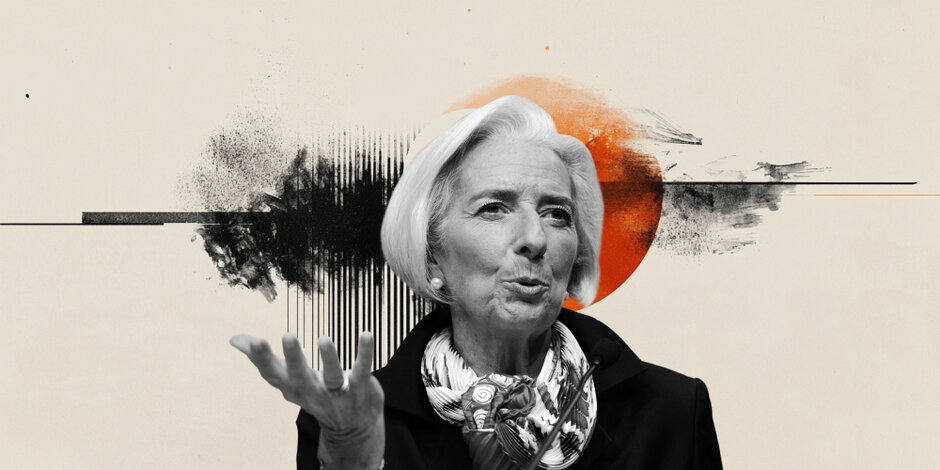The debate’s heating up at the ECB, according to released Minutes

The just-released minutes of the European Central Bank's June meeting show that most ECB members were concerned about a possible inflation undershoot. Important to stress 'most', but certainly not all.
The minutes of the ECB’s June meeting confirmed the message that President Christine Lagarde tried to convey during the press conference: downside risks to growth and the downward revisions to the Bank's own inflation forecasts were the main reasons for the European Central Bank to cut interest rates again. Interestingly, there had been two fundamental debates: one on whether monetary policy was now still neutral or already accommodative, despite earlier comments by President Lagarde debunking this concept; and one on whether or not inflation undershooting should be a concern. This latter debate would not have happened if the ECB had a price level target instead of an inflation target.
Here are some highlights from the minutes
Inflation undershooting, part 1. “Members discussed the extent to which the projected temporary undershooting of the inflation target was a concern. Concerns were expressed that following the downward revisions to annual inflation for both 2025 and 2026, inflation was projected to be below the target for 18 months, which could be considered as extending into the medium term.”
Inflation undershooting, part 2. “The risk of a sustained undershooting of the inflation target was seen as limited unless there was a sharp deterioration in labour market conditions.”
Neutral or accommodative. “It was contended that, after seven rate cuts, interest rates were now firmly in neutral territory and possibly already in accommodative territory. It was argued that this was also suggested by the upturn in credit growth and by the bank lending survey.”
Not everyone agreed with the rate cut decision, part 1. “Almost all members supported the proposal made by Mr Lane to lower the three key ECB interest rates by 25 basis points.”
Not everyone agreed with the rate cut decision, part 2. “At the same time, a few members saw a case for keeping interest rates at their current levels. The near-term temporary inflation undershoot should be looked through, since it was mostly due to volatile factors such as lower energy prices and a stronger exchange rate, which could easily reverse.”
Markets can still drive the ECB. “In this context, it was recalled that the staff projections were conditioned on a market curve that embedded a 25 basis point rate cut in June and about 50 basis points of cuts in total by the end of 2025.”
We expect the ECB to cut again in September
In its policy assessment published earlier this week, the ECB stressed the importance of scenario analysis. An argument that perfectly fits into the current situation. A situation of high policy and economic uncertainty. With this in mind, it appears that the ECB will now want to take a step back and, at least temporarily, halt the current rate-cutting cycle. As Lagarde said at the June press conference, “the ECB is in a good place” now.
This ‘good place’ has become somewhat less comfortable recently due to the continued strengthening of the euro. Not only does the stronger euro act as an additional tariff on top of the current trade tensions, but it also bears the risk of more inflation undershooting. Consequently, chances are high that the ECB will have to leave the ‘good place’ soon and continue cutting rates.
Driven by the stronger currency, the only question for the ECB currently seems to be when and by how much and not if to continue cutting rates. In fact, in case of a re-escalation of trade tensions and the subsequent weakening of the eurozone growth outlook, further rate cuts would come faster and at a larger magnitude.Should the trade story move on without a strong escalation and further turmoil, and inflation continues its recent disinflationary trend but fiscal stimulus brings back growth and inflation, in 2026 at the latest, we would see the ECB cutting only one more time in September.
All in all, today’s minutes indicate that the discussion at the ECB about next steps has heated up. The strengthening of the euro could be a welcome argument to continue cutting rates, while at the same time, the question of whether or not to simply allow for inflation undershooting to compensate for previous overshooting will get more attention.
Read the original analysis: The debate’s heating up at the ECB, according to released minutes
Author

ING Global Economics Team
ING Economic and Financial Analysis
From Trump to trade, FX to Brexit, ING’s global economists have it covered. Go to ING.com/THINK to stay a step ahead.
















